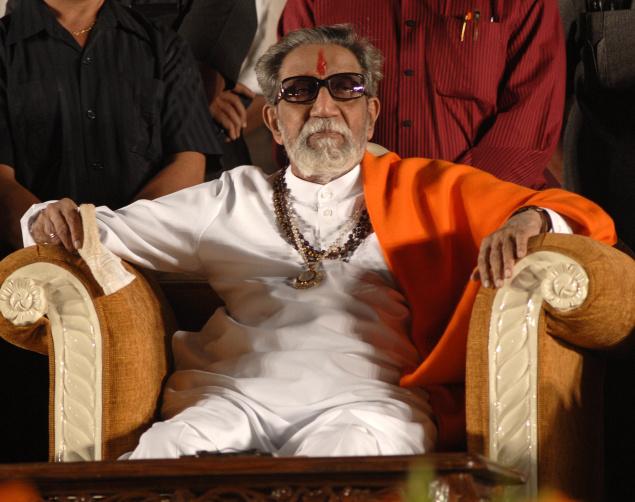
Mumbai, November 17: Prime Minister Manmohan Singh called up Balasaheb Thackeray's son Uddhav even as he appealed to people to maintain calm and sobriety. He said the interests of Maharashtra were “particulary important” for Thackeray and “he always strived to inculcate a sense of pride in its people.”
Interestingly, notwithstanding his strong anti-Congress stand, Thackeray extended his party’s support to Pratibha Patil, also from Maharashtra, in the Presidential election in 2006 and later to Mukerjee in this year’s election.
Despite the setback in his health in the last few days, Sena leaders and the party mouthpiece ‘Saamna’ kept maintaining that he was improving. Eminent personalities from politics, Bollywood and industry have been thronging his residence ever since.
Media persons and Sena workers stationed outside ’Matoshree’ realised around 4 PM that there was some development as several senior leaders from Sena, BJP and other parties started arriving and police were seen to have become more alert.
As the speculation rose, Shiv Sena leaders Sanjay Raut, Diwakar Raote accompanied by Dr Jalil Parkar, who had been treating Thackeray for the last three years, came out around 5 pm to announce Thackeray’s demise.
On hearing the news, a frenzied mob of Shiv sainiks tried to enter ‘Matoshree’ by raising slogans “Bal Thackeray Amar Rahe’ while police tried to prevent them from going inside and enhanced security all over.
Many of them in the crowd broke down on hearing the news about their leader’s death.
Thackeray’s health kept fluctuating since last few days with his son Uddhav appealing to Sainiks “to maintain calm and pray for his father” on Thursday night.
Shiv Sena spokesperson Sanjay Raut appealed to people to maintain peace and harmony.
The condition of Sena patriarch worsened on Wednesday night when he had to be put on life support. He was taken off life support later after showing signs of improvement.
In the past few days various political bigwigs like NCP chief and Union Agriculture Minister Sharad Pawar —— Thackeray’s old friend; BJP president Nitin Gadkari, and senior leader Gopinath Munde, Maharashtra Chief Minister Prithviraj Chavan, Home Minister R R Patil, Finance Minister Jayant Patil among others visited Matoshree.
Thackeray addressed Shiv Sainiks every year on Dussehra at Mumbai’s Shivaji Park since Sena’s inception. However, this year he could not attend the annual event, and his recorded address was telecast.
In this recorded speech, Thackeray, visibly very ill, appealed the workers to support his son and executive president Uddhav Thackeray, and grandson and Sena youth wing president Aditya Thackeray.
“I have collapsed physically,” he had said





Comments
Add new comment